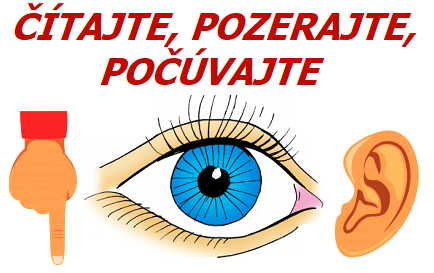25 Slovensko – moja vlasť - SLOVAKIA – MY HOMELAND :)
Vytvorené: 18. 10. 2014 Tlačiť
a) The country and its inhabitants
Slovakia is a beautiful country situated in Central Europe and it is often called „the heart of Europe“. The country borders on the Czech Republic in the west, on Poland in the north, on Ukraine in the east and on Hungary and Austria in the south. The Slovak Republic was established on the first of January 1993. The country covers an area of 49039 sq km and has a population of about 5 million people. Most inhabitants are of Slovak nationality, but there are also other ethnic groups like Hungarians, Ruthenians, Ukrainians and Romany. The official language is Slovak and the capital of the Slovak Republic is Bratislava. The National flag consists of three stripes: white, blue and red. The left half of the flag bears the state emblem of the Slovak Republic - a double cross with mountains in the background.
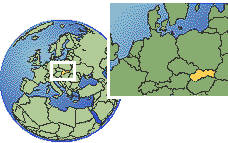 |
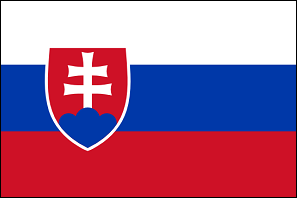 |
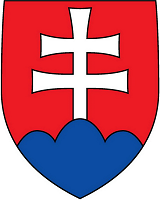 |
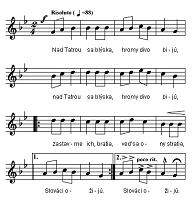 |
Slovakia was settled by Slavic Slovaks about the 6th century. In the 9th century Slovakia became part of the state of Great Moravia. St Cyril and St Methodius converted Slovakia to Christianity in 865. In 907, the Germans and the Magyars conquered the Moravian state, and the Slovaks fell under Hungarian control from the 10th century up until 1918. After World War I, in 1918 the Czechoslovak Republic was established. A puppet state was created out of Slovakia with Monsignor Josef Tiso as a prime minister in 1939. It officially collaborated with Germany. However, in 1944 Slovakia was the place of a great anti-fascist uprising – the Slovak National Uprising. After the war, the Czechoslovak Republic was established again and lasted till January 1st 1993 when the sovereign Slovak Republic came into existence after split-up of the former Czechoslovakia.
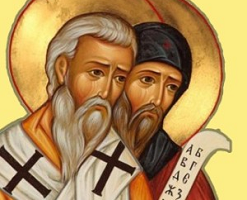 |
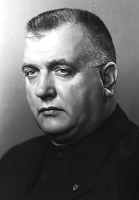 |
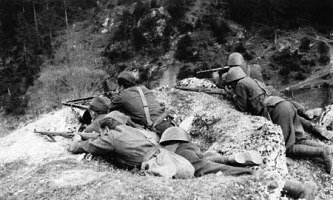 |
St Cyril and St Methodius |
Josef Tiso |
Slovak National Uprising |
The climate is a mixture of continental and ocean climates with four seasons. The predominant part of Slovakia is mountainous, only in the southern and south-eastern parts are extensive lowlands, such as Podunajská (2), Záhorská (1), Juhoslovenská (3) and Východoslovenská (4). The basic mountain chain is formed by the Carpathians. The highest peak in our country is the Gerlachovský štít in the High Tatras (4). Other mountains include the Lower Tatras (2), the Slovak Paradise (3), the Big Fatra (5) and the Small Fatra (1).
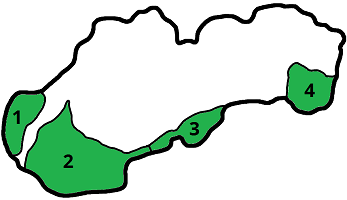 |
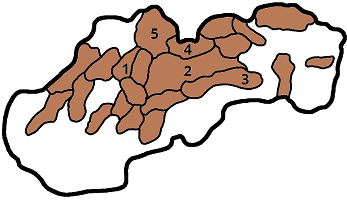 |
Lowlands |
Mountains |
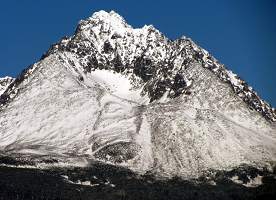 |
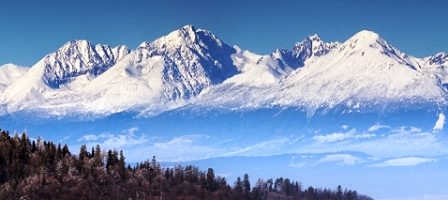 |
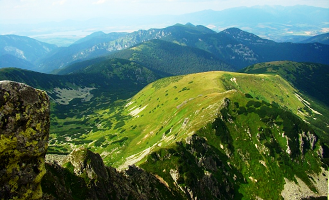 |
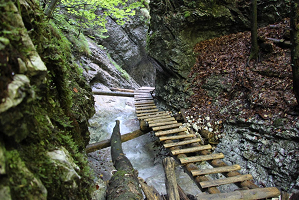 |
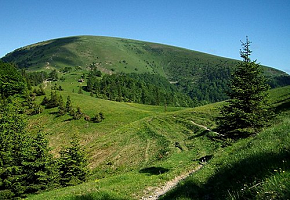 |
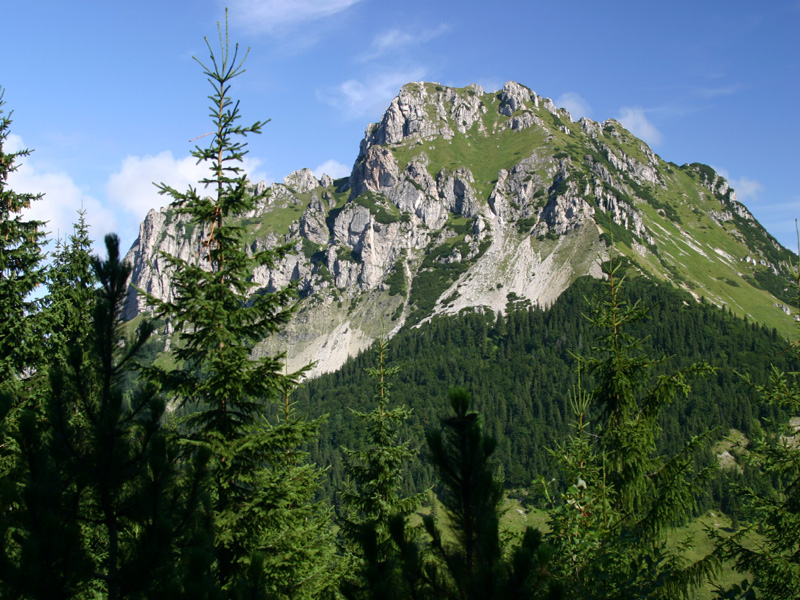 |
Gerlachovský
|
High Tatras |
Lower Tatras |
Slovak Paradise |
Big Fatra |
Small Fatra |
The most important Slovak rivers are the Danube, the Váh and the Hron. There are tarns in the High Tatras, for example Štrbské pleso and Popradské pleso. The biggest water power station can be found in Gabčíkovo.
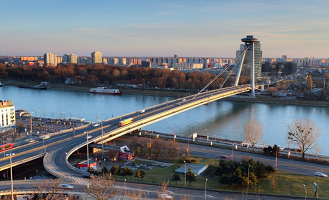 |
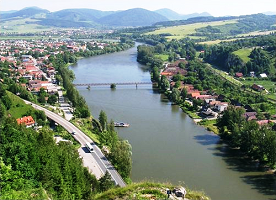 |
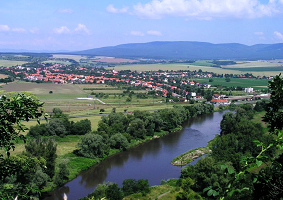 |
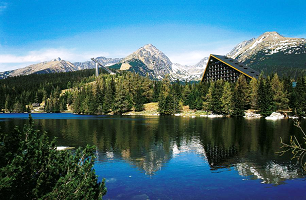 |
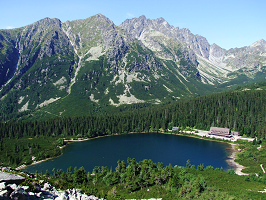 |
Danube |
Váh |
Hron |
Štrbské pleso |
Popradské pleso |
Slovakia is not very rich in natural resources and we have to import most of raw materials. The main industrial branches are iron and steel industry, production of man-made fibres, oil rafineries. Clothing and food industries are also very important. Southern and eastern lowlands are the main areas for agriculture.
The system of government of the Slovak Republic is divided into three branches .The legislative branch is represented by the National Council of the Slovak Republic (Parliament), the executive branch is represented by the Government (the Prime Minister and his cabinet) and the President. Courts form the judicial branch. The Slovak head of state is the president.The current president Andrej Kiska has been in his Office for nine years. Most executive power lies in the hands of the prime minister, currently Robert Fico.
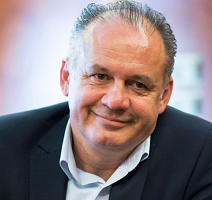 |
 |
Andrej Kiska |
Robert Fico |
b) Places I would recommend to a foreigner
There are many attractive places for tourists in Slovakia.The most attractive destinations are the capital of Bratislava and the High Tatras. There are many rare plant and animal species in the High Tatras. The High Tatras and Low Tatras are great for spending active holidays during the whole year because they offer numerous ski, hiking and mountaineering opportunities.Slovakia's karst areas offer an high number of caves. Thirteen caves are open to the public. Ochtinská Aragonite Cave is one of three aragonite caves in the world, but probably the most famous caves are Dobšinská ice cave and Demänovská dripstone cave. Slovakia contains many spas like Piešťany, Trenčianske Teplice, Smrdáky or Lúčky.You can admire here a lot of castles, most of which are in ruins. The best known castles include Bojnice Castle, Spiš Castle, Orava Castle and Bratislava Castle. Čachtice Castle used to be home of the „Bloody Lady“, Elizabeth Báthory. There are also many interesting towns in Slovakia. Kremnica and Banská Štiavnica are famous for their mining history. Trnava has many unique baroque churches and an old university. Slovakia also offers many cultural events to tourists such as folklore festivals in Východná, Detva and Myjava. Tourists can visit our old typical villages, such as Vlkolínec, Čičmany or Vychylovka.
c) Customs and traditions
Slovak people are proud of their folklore traditions. There are many folk groups keeping and representing these traditions. The most famous are Sľuk and Lúčnica. The Slovak folklore can be seen on regular folk festivals. Východná is an international folk festival where everybody can discover beauties of our traditional folk traditions and customs.Slovak people are Christians and because of this fact the most important holidays are Christmas and Easter. For Christmas and Easter the Slovak families usually get together – they visit each other and cook traditional meals. Various Easter and Christmas traditions are still kept in the villages. There are many typical Slovak restaurants serving traditional Slovak cuisine for example bryndzové halušky (gnocchi with sheep cheese) and typical alcoholic drinks including borovička (juniper gin) and beer.
d) Sterotypes and prejudices
Slovaks are said to be hospitable, hard – working and willing to help others. Foreigners appreciate the close relationships Slovaks have within their families. Slovak parents help their children considerably even when they grow up. On the other hand, people often say that Slovaks underestimate themselves. Slovak women are famous for their unusual beauty. Slovaks are also referred to as quite passionate alcohol drinkers.
e) The place of Slovakia in united Europe
Slovakia became a member of the European Union in May 2004 and Slovak language became one of the official languages of the EU. This membership has influenced the political and economical life of the country. Many Slovak institutions participate in various EU funded project. Slovakia is not a wealthy country. However, Slovakia has brought up many clever people like for example constructor of parachute Štefan Banič or constructor of helicopter Ján Bahýľ. Slovak origin have people like Eugen Cernan -the second American cosmonaut who stepped on the moon or Andy Warhol - major representative of the pop art.
![]()
· Simulácie z fyziky· O Slovensku po slovensky· Slovenské kroje· Kurz národopisu· Diela maliarov· Kontrolné otázky, Domáce úlohy, E-testy - Priemysel· Odborné obrázkové slovníky· Poradňa žiadaného učiteľa· Rýchlokurz Angličtiny. Rozprávky (v mp3)· PREHĽADY (PRIBUDLO, ČO JE NOVÉ?)Seriály:· História sveta (1÷6)· História Slovenska (1÷5)· História módy (1÷5).
Členstvo na portáli
Poznámka pre autora
Copyright © 2013-2025 Wesline, s.r.o. Všetky práva vyhradené. Mapa stránky ako tabuľka | Kurzy | Prehľady |





